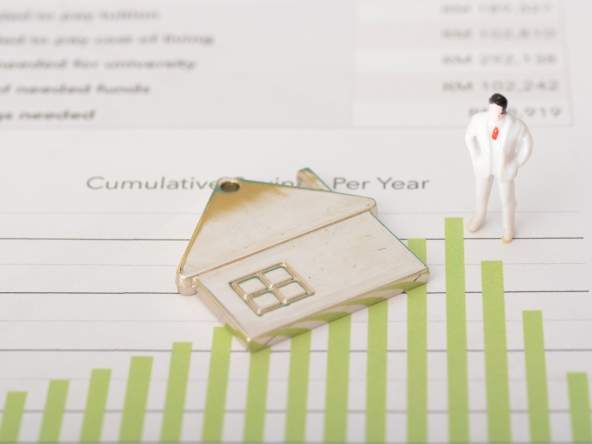The Bay Area is known for its competitive rental market, but as a landlord, you know that raising rents isn’t as simple as just sending a notice to your tenants. With rent control laws and regulations like AB 1482 in place, it’s crucial to navigate these rules carefully to stay compliant.
In this guide, we’ll break down the local rent control laws, explain how to prepare for rent increases, and show you how to keep your tenants in the loop without risking legal trouble.
Understanding Rent Control in the Bay Area
If you’re a landlord in the Bay Area, you’re likely familiar with the term rent control, but the specifics can vary depending on where your property is located. For example, San Francisco, Oakland, and Berkeley all have their own rent control ordinances, which can be quite different from state law.
Rent control typically limits how much you can raise rent on certain types of properties. If your property was built before a specific date (usually in the 1970s), it likely falls under rent control. In cities like San Francisco, Oakland, and Berkeley, there are strict limits on how much you can increase the rent each year.
- San Francisco: The San Francisco Rent Board enforces the city’s rent control laws. You can only increase the rent by a small percentage each year, depending on inflation. Check the San Francisco Rent Board’s website for the current allowed increase.
- Oakland: Oakland’s Rent Adjustment Program limits how much landlords can raise rents. Increases typically cap at 2.7% per year but can fluctuate based on the cost of living. Know more about the allowable rent increase for Oakland here.
- Berkeley: Berkeley’s Rent Stabilization Board keeps tabs on allowable rent increases, with a formula based on inflation similar to San Francisco’s. Berkeley’s Annual General Adjustment for 2024 is at 1.9%.
If your property falls under one of these local rent control laws, it’s essential to stay on top of these regulations. Ignoring them could lead to hefty fines or even legal disputes. Explore how virtual tours can help improve your property’s appeal during rent increase negotiations.

The Statewide Rent Cap – AB 1482
If your property is newer or located in a city without local rent control, you’re still subject to California’s statewide rent control law, AB 1482. Passed in 2019, this law, also known as the Tenant Protection Act, limits rent increases to 5% plus the local rate of inflation or 10%, whichever is lower.
For most properties built before 2005, AB 1482 applies. However, there are some exemptions, like single-family homes owned by individuals (as long as the owner isn’t a corporation or REIT). To learn more about exemptions, you can visit the California Tenant Protection Act page.
City-Specific Rent Control Rules
The Bay Area isn’t just subject to state laws, local laws come into play too. Here’s a quick overview of what you need to know for the biggest cities in the area:
San Francisco: Rent increases are tightly regulated. You’ll need to get familiar with the San Francisco Rent Board to ensure you’re complying with local rules. There are also strict just-cause eviction protections, meaning you need a valid reason to evict tenants.
Oakland: Oakland’s Rent Adjustment Program enforces rent control and just-cause eviction. This means rent increases are capped annually, and landlords must provide specific reasons for eviction.
Berkeley: The Berkeley Rent Stabilization Board oversees rent control rules and tenant protection laws. Rent increases are determined based on a cost-of-living formula.
Understanding the specifics of your city’s rent control laws can prevent legal headaches down the road. Remember, rent control ordinances are in place to protect tenants, but as a landlord, you have the right to raise rents within the legal limits.
Preparing for a Legal Rent Increase
Now that you know the laws, how can you prepare for a rent increase while staying compliant?
- Calculate the Legal Rent Increase:
If your property is subject to AB 1482, use the cap of 5% plus the local rate of inflation, up to 10%. In cities like San Francisco or Oakland, check the rent boards for the exact percentage.
- Provide Proper Notice:
In California, landlords must give tenants at least 30 days’ notice for rent increases of 10% or less. If you’re raising rent more than 10%, you’ll need to give 90 days’ notice.
Check if your city has any additional requirements on top of this. For example, in San Francisco, you’ll need to submit rent increase notices to the Rent Board.
- Keep Documentation and Communication Clear:
When sending rent increase notices, be sure to clearly explain the reasons for the increase, and how it fits within the legal limits. Transparent communication can prevent disputes with your tenants.

Handling Tenant Reactions
Raising the rent can be a touchy subject, and not all tenants will react positively. To minimize conflict, here are some tips:
Open communication: Be upfront about why you’re raising the rent. Explain rising maintenance costs, property taxes, or inflation as driving factors.
Offer options: If possible, offer longer-term leases or discounts for prompt payments to incentivize tenants to stay.
Dispute resolution: If tenants push back, offer to mediate through the local rent board or a landlord-tenant dispute resolution service.
Staying Ahead of Legal Changes
Rent control laws can change, especially in a dynamic region like the Bay Area. As a landlord, it’s your responsibility to stay informed.
Keep An Eye On Updates
The local San Francisco Rent Board and other city-specific rent boards are great places to stay updated on policy changes.
Consult A Property Manager Or Attorney
If the legal landscape seems confusing, you can always seek advice from a property management company or a lawyer specializing in real estate.
You can also view our updated monthly Market Insights in our blog. Read more about it here.
Conclusion
Navigating rent control laws in the Bay Area can be a complex process, but with the right knowledge, you can confidently prepare for rent increases while staying compliant. Whether your property is under local rent control in San Francisco, Oakland, or Berkeley, or subject to the state-wide AB 1482 rent cap, it’s crucial to follow the laws closely. By calculating legal increases, providing proper notice, and maintaining open communication with your tenants, you can avoid costly mistakes and maintain a positive landlord-tenant relationship.
Make sure to regularly check local laws, and when in doubt, you can contact the Cal Agents today at 510.899.9221, or visit us at www.thecalagents.com today.





